Artist Creates Incredible Sculptures of Animals Crawling Out of Trees Using Fallen Logs
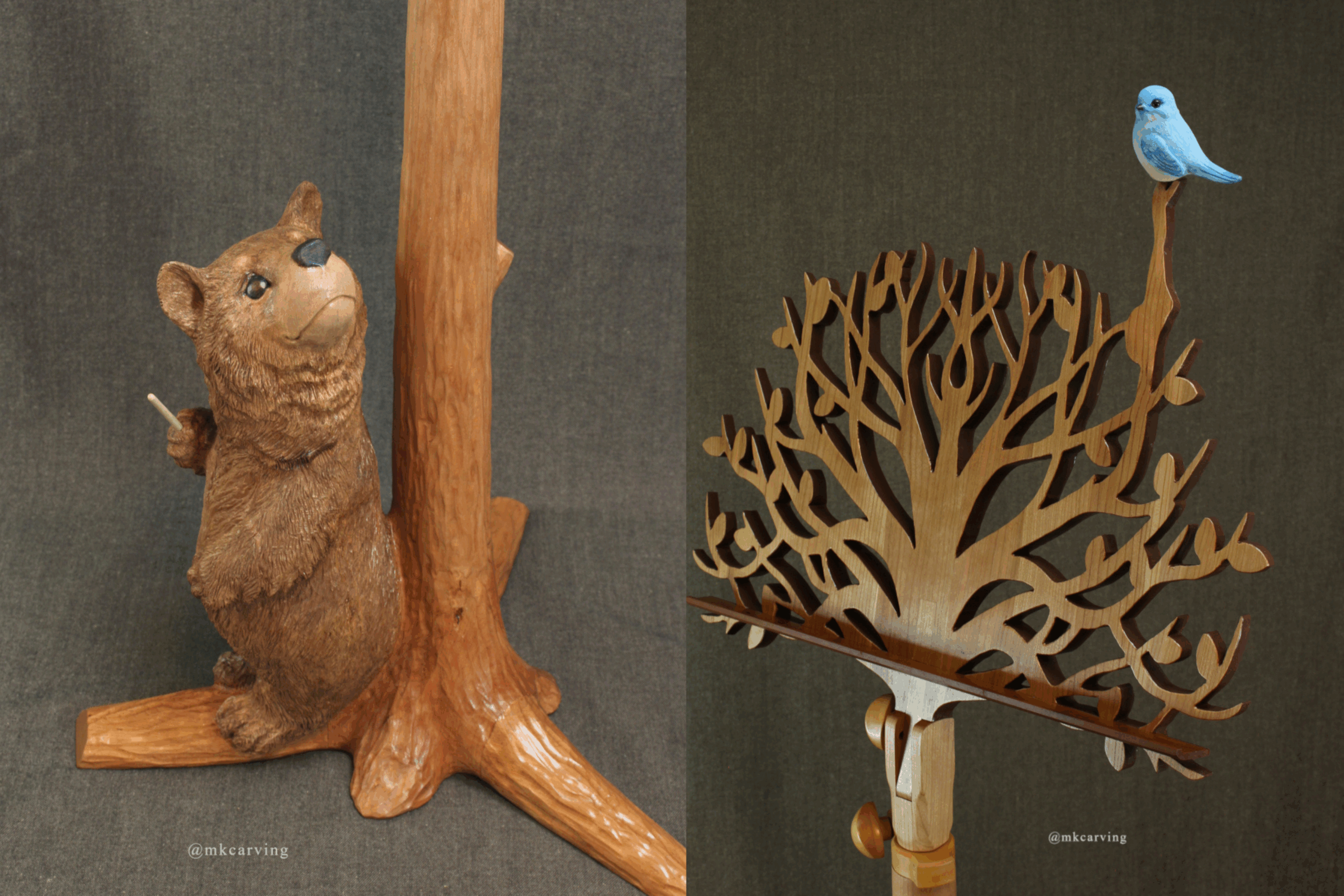
Most people pass by a fallen log without a second thought, but for one artist, it is the beginning of something extraordinary. From what looks lifeless, he coaxes the shapes of wild creatures so vivid they seem ready to move, capturing moments that feel pulled straight from the forest’s secret life.
Awakening Wonder in Wood
Most people look at a fallen log and see firewood. Mori Kono sees a heartbeat. Born in Japan in 1967 and now based in Abbotsford, British Columbia, he came to Canada in 1994 and refined his craft in timber-frame and log-home building before expanding into architectural carving, wildlife sculpture, clay modeling, and public installations. With over two decades of experience, his work has been recognized by log-home industries, galleries, contractors, and public arts communities across Canada and the U.S., and has found homes in places like BC Children’s Hospital, the Vancouver Police Department, and schools throughout the region.
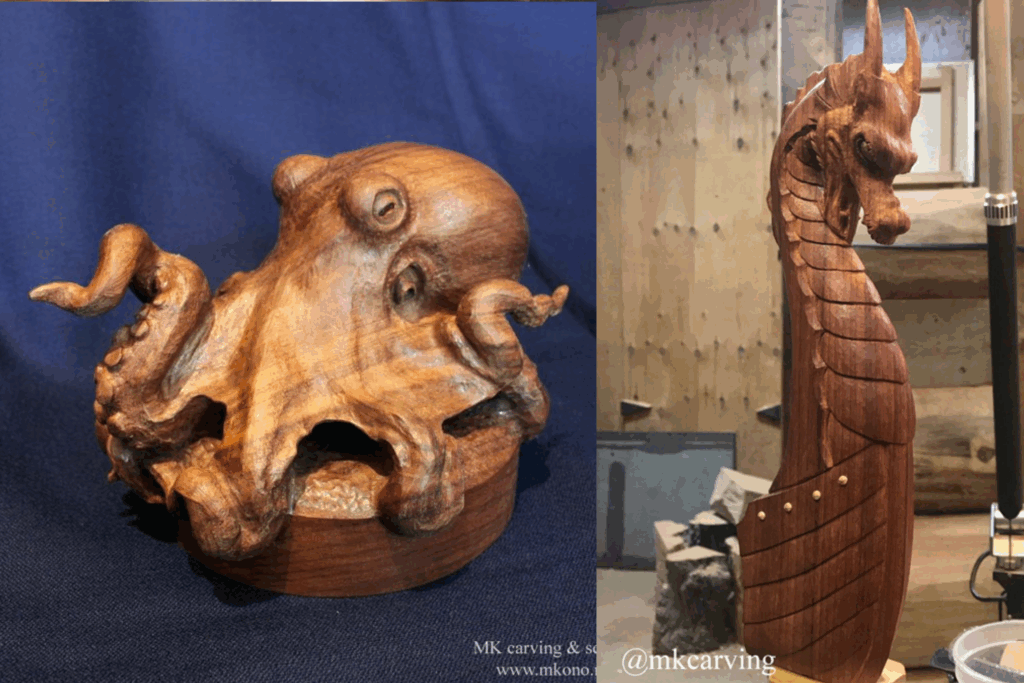
Where others see the end of a tree’s life, he sees the beginning of another story, one that crawls, leaps, and peers out from the grain of the wood itself. In his hands, a rough block becomes a raccoon’s curious glance, an owl’s silent glide, or a bear cub’s tentative paw. Each carving feels less like something he created and more like something he uncovered, as though the animal had always been there, waiting for those right hands to set it free.
At MK Carving & Sculpting, Kono and his team gather fallen cedar, alder, and birch, working only with what nature has already released. Their mission is as clear as it is urgent: “Our mission is to reintroduce the wonders of nature into our fast-paced modern world. We believe in living in harmony with nature’s rules and aim to inspire a deeper appreciation for the mother nature through our art. If our creations can help foster a greater respect and connection with nature, we consider it our greatest achievement.
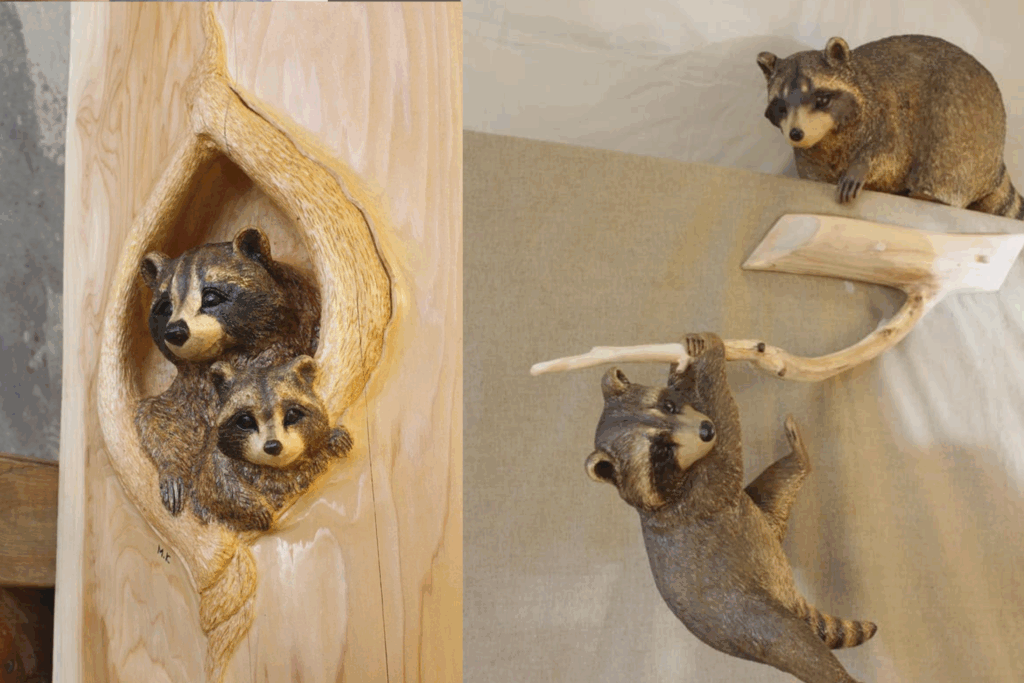
For Kono, this work is more than artistry; it is a reminder. In a world rushing toward screens and schedules, his sculptures pull us back to the forest, to the textures, the creatures, and the quiet laws that keep everything in balance. His creations are not just wood carvings; they are invitations to see the wild beauty still woven into our everyday lives.
The Art of Transformation
In Mori Kono’s hands, transformation begins long before the carving itself. It starts in the forest, where fallen cedar, alder, and birch lie waiting. These logs are not cut from living trees but gathered after nature has already released them, preserving the forest’s balance while offering new life to the discarded. Each piece of wood is chosen for its unique grain, knots, and imperfections, because these natural marks will later guide the shape of the animal hidden within.
Once the wood arrives at the workshop, it undergoes careful preparation. Kono and his team often use drying methods that prevent warping and cracking, ensuring the log remains stable for the intricate work ahead. Only then does the real transformation begin. With power tools, the general form of the creature emerges, rough at first but already hinting at motion and personality. As the days pass, the process slows. Kono leans in close with a handheld chisel, coaxing out fine strands of fur, the curve of feathers, and the glint of an eye. These are the details that turn a block of wood into something that feels as if it might blink or breathe.
Crafting the Creature: Tools, Technique, and Detail
The magic of Mori Kono’s work lies in the marriage of precision and patience. At the start, he turns to power tools to shape the basic form, using chainsaws and grinders to rough out the curves of a bear’s back or the arc of an owl’s wings. These early cuts are bold, removing large sections of wood to reveal the emerging silhouette. Once the foundation is in place, the pace slows. Kono switches to handheld chisels, tools that demand not only skill but an intimate connection with the material. With them, he carves the delicate lines of fur, the layered edges of feathers, and the subtle creases around an animal’s eyes.
Every stroke is intentional. Kono often speaks about maximizing the natural character of the wood, letting its texture, knots, and grain shape the final expression of the creature. This approach ensures that no two sculptures are ever the same. Even the smallest feature, like the twist of a raccoon’s whiskers or the way a rabbit’s ears tilt forward, is given attention until it feels alive.
The finishing stage is where detail becomes depth. Kono carefully applies color, not to mask the wood but to enhance it. Darker tones highlight the shadows within fur, while lighter accents bring forward the brightness of an eye or the softness of feathers. The result is a sculpture that seems ready to move, as though caught in a moment of pause before returning to the forest. It is here, in this interplay between craftsmanship and nature’s design, that the creature truly takes form.
The final stage is where the sculptures come fully alive. Using subtle coloring techniques, Kono adds contrast so the animal stands out from the pale log, giving depth and vibrancy without losing the natural warmth of the wood. By the time the work is complete, the transformation is not only visual but emotional. What was once lifeless now carries the presence of the wild, a reminder that beauty can be drawn from what many might overlook.
A Gallery of Forest Friends
Step inside Mori Kono’s workshop and you will find a gathering of creatures that seem ready to slip back into the woods at any moment. A bear cub clings to the side of a log, its paw reaching upward as if to climb. Two raccoons peek out from a hollow, their curious eyes meeting yours with a mix of mischief and welcome. An owl perches mid-flight, wings unfolding in a quiet moment before takeoff. Rabbits crouch low as though listening for movement in the grass, while chipmunks appear mid-scamper, frozen in the act of darting into safety.

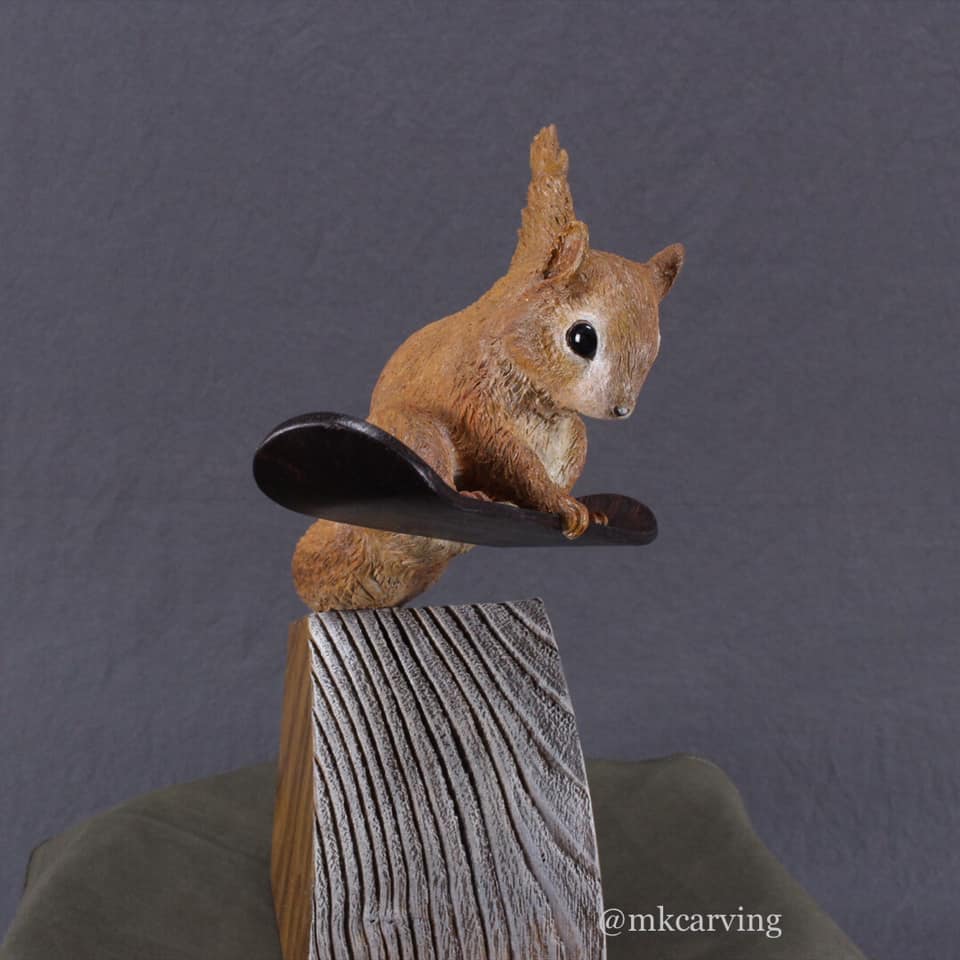
Each sculpture captures more than anatomy. Kono shapes expressions and gestures that tell small, wordless stories. A tilt of the head suggests curiosity. The arch of a back hints at alertness. Even the smallest chipmunk feels imbued with personality, as though the wood still holds the spirit of the forest it came from. This is why his work resonates—not just because of its realism, but because it invites us to imagine the moment before and the moment after, to see these animals not as static objects but as living beings in motion.
Over time, his creations have found homes in private collections, public spaces, and institutions. In each setting, they become more than decoration. They are reminders of the life that thrives beyond our windows and screens, and of the connection we still share with the wild world when we pause long enough to notice it.
Bringing the Wild Home
You do not need a workshop filled with cedar logs to reconnect with nature. The spirit behind Mori Kono’s work can be applied to your own life through intentional choices that nurture both creativity and awareness.
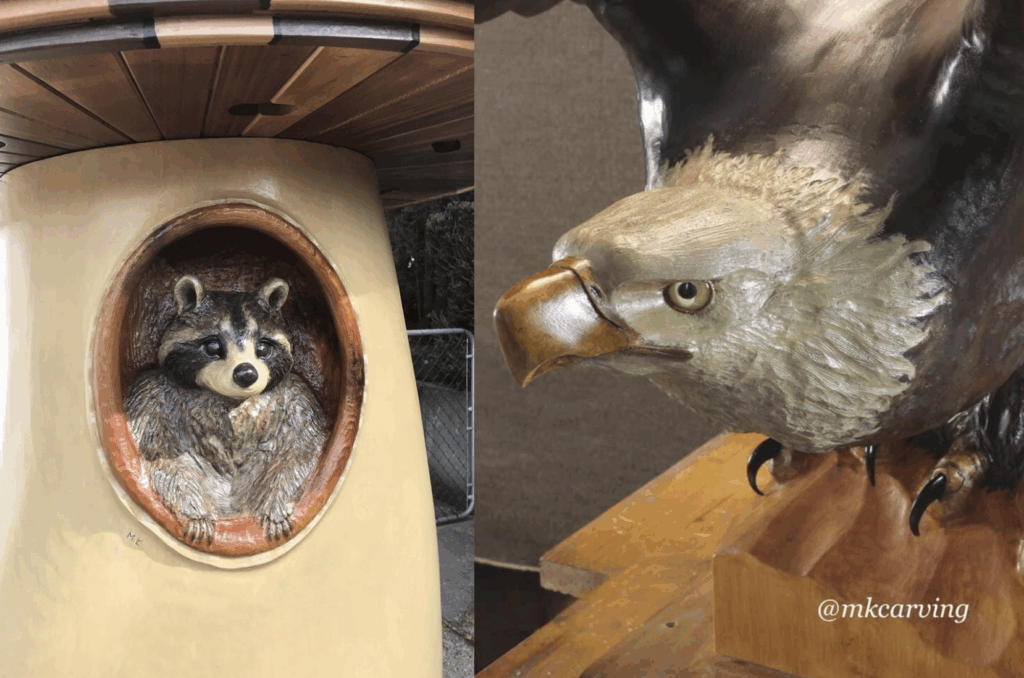
- Notice Small Details – Train yourself to slow down and observe. The curve of a branch, the grain in a piece of wood, or the way sunlight shifts through a window can spark inspiration and deepen your appreciation for what surrounds you.
- Use What You Have – Before buying new, look for materials or objects already at hand. Repurposing not only reduces waste but also challenges you to think creatively about how to give something a new life.
- Value Patience – Like the gradual shaping of a sculpture, meaningful work takes time. Resist the urge to rush and allow each step to unfold naturally. This patience often reveals unexpected beauty.
- Combine Purpose with Beauty – Choose or create things that serve a function while also lifting your spirit. A simple object can become a daily reminder of values you want to keep close.
- Share the Experience – Inspire others by sharing what you have noticed or made. A conversation, a gift, or even a photograph can encourage someone else to pause and see their own world differently.
Integrating these habits into daily life is a way of honoring the world beyond our walls. When we make space for nature’s lessons, we keep them alive, not only in our homes but in the way we move through the world.
A Forest of Possibility
Mori Kono’s sculptures remind us that the world still holds quiet magic, waiting for those willing to look closely. A fallen log becomes a bear’s gentle climb. A hollowed trunk reveals the watchful gaze of an owl. These transformations are not just about wood and tools—they are about vision, patience, and the belief that beauty can emerge from what others overlook.

In our own lives, we often pass by opportunities hidden in plain sight. We hurry past the raw materials for growth, creativity, or connection because they appear ordinary at first glance. Kono’s work is proof that with attention and care, even the most unassuming beginnings can become extraordinary.
The forest may seem far away, but its lessons are close. They are in the way we choose to see, the way we choose to shape, and the way we choose to share what we find. The next time you encounter something that seems spent or forgotten, ask yourself: what life is still waiting inside it?
Loading...

